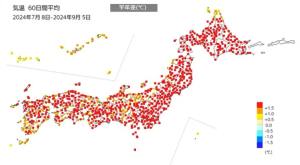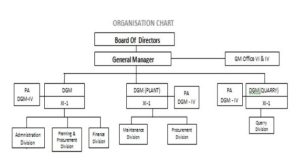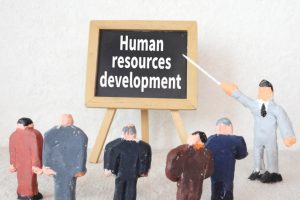Re: A news item and subject which I just want to check out (106) September 22, 2023
The Prime Minister Kishida reshuffled the Cabinet on September 13, and five women ministers tied for the most ever were born and three out of the five were in the Cabinet for the first time. However, the selection of vice ministers and parliamentary secretaries, totally 54 posts, did not include any woman. Whatever circumstances are, seriousness in promoting women came into question. It has been pointed out all the time, and according to Gender Gap Index published by World Economic Forum in June, Japan ranks 125th out of 146 countries, in particular 138th in the politics, and ranks in a position that can’t be called a very developed country.
And the recent selection was perceived as the result of an emphasis on factional balance, and Cabinet reshuffle did not lead to higher approval ratings. That also seems to affect the timing of dissolution of the House of the Representatives.
■A rise in land prices in 2023:
The Ministry of Land, Infrastructure, Transport and Tourism announced 2023 benchmark land price that serves as a guide for land sales on September 19. A ratio of a rise in land prices for all types land use, including residential and commercial land, was 44.7 %, and the average nationwide has increased by 1.0 % compared to the previous year and was positive for the second year in a row. A rate of rise surpassed 0.4 % in 2019 before corona, and recovery trend is clear. As its background, the increase of domestic investment, foreign visitors to Japan and redevelopment are mentioned. But it has also pointed out that the rate of price increase may slow down, due to rising interest rates.
The trend of land prices has a significant impact on the economy. In Japan, due to monetary easing aimed at correcting the yen’s appreciation caused by the Plaza Accord in 1985, land prices had soared, and it was said at the peak that “the total land value inside the Yamanote Line is equivalent to the total land value of the entire United States”. However, the market price sometimes brings speculation without real demand. As a result, the bubble that has inflated will inevitably burst somewhere, and it is true in history. In neighboring country China, the phenomenon is occurring right now.
■Global economic trends:
According to OECD, the global economy in 2024 is projected to slow down to 2.7 % compared to forecast 3.0 % as of June. OECD says that tightening monetary policy as a measure against inflation in each country and structural issues of real estate market in China will affect. In China, demand shortage is occurring due to uncertainty about the future of the private sector, and according to some perspectives, it is estimated that it will take three years to recover. And foreign companies have doubts about transparency of policy and laws and regulations in China, and 40 % of companies surveyed is revising down investments in China. Chinese government is prioritizing international political dynamics over economics, and there are concerns about delays of economic measures.
In addition, one of uncertainties about future global economy is that debts are increasing globally. According to the aggregation of IIF, Institute of International Finance, it seems that the debts are 307 trillion dollars, about 40 quadrillion in Japanese yen as of June 2023, and it has become the highest record. Incidentally, 10 quadrillion is usually read as “ikkei en” and 10,000 times 1 trillion yen. Global debts are increasing 10 trillion dollars in the first half of 2023, and 80 % is increasing in developed markets, and in particular, corporate debt continues to increase. The so-called “ Lehman shock” occurred in 2008, and the credit crunch became serious, and the international framework for banking regulations called Basel Ⅲ has been strengthened by applying the lessons.
■Strikes are happening one after another in the United States:
FOMC held recently decided not to raise interest rates this time. As its background, it is mentioned that labor markets conditions are showing signs of easing slightly. But the FRB has suggested that it is considering another 0.25 % rate hike before the end of the year.
In the United States, inflation has recently subsided statistically, but crude oil prices are rising again, and big strikes by labor unions in various industries are happening frequently at the highest level in 23 years. In particular, for UAW, United Auto Workers, this year is periodic labor condition revision once every four years, and UAW is seeking more than 40 % wage increase and going on strike in September. The rate of unionization in the United States is about 10 %, and not so high. Incidentally, the rate of unionization in Japan is estimated to be 16.5 % in 2022. However, according to a public opinion poll, about 70 % of people in the United States “support” labor unions as of the end of August and the ratio is rising significantly. It seems that the President Biden is looking ahead to next year’s presidential election and he is also showing his understanding of the union’s demand. At present, the economy in the United States looks like winner-take-all in the world, but such movement may bring “wage-push inflation” in the future, and it seems to me that this leads to the chairman of FRB’s statements that it is considering “another rate hike before the end of the year”.
■An increase of home delivery service and general cargo transport by truck:
Handling number of pieces by home delivery service has been increasing with the increase of EC, electronic commerce, and was 5.00588 billion last year increased by 1.1 % compared to the previous year, and record high for 8 consecutive years. It means it increases by about 50 million pieces in one year. If I make rough calculations how many personnel I need in the last one mile for this increase, supposing deliver about 200 pieces per person per day, about 1,000 pieces in a week, more than 50,000 pieces in a year. If that is the case, supposing the increase of about 50 million, it is necessary to need 1,000 more people. By the way, handling number of home delivery service does not include direct delivery by in-house like Amazon. Many of them seems to contract with gig workers, so-called sole proprietor drivers.
By the way, the regulations called “maximum overtime hours up to 960 hours” for truck freight transport will start from April next year. Before this law is revised, “administrative disposition” was enough against the violation. But penal regulations “imprisonment of up to 6 months or fines of up to 300,000 yen” will impose on business operators as a violation of the Labor Standards Law, where the competent authority is the Ministry of Health, Labor and Welfare, from April next year. And “a notice of revised improvement standard” will come into force from April next year, and a violation is subject to “administrative guidance” by Motor Truck Transportation Business Act, where the competent authority is the Ministry of Land, Infrastructure, Transport and Tourism.
“The regulations of maximum overtime hours” are discussed from various viewpoints, but for the middle-aged and elderly over 40 years old considered to account for about 90 % of the total, their real intensions are that “reduced working hours are good, but if income decreases, it is troublesome”. If income decreases, it is considered that in order to protect their lives, some drivers will ①change jobs to a business company including black business operators where they can earn more wages ②head for side jobs including other industries ③change jobs to gig workers being not applicable to the Labor Standards Law.
In particular, there are concerns that the need to secure drivers by couriers and EC mail order retailers is strong, and then competition for talent will occur between general motor vehicles freight transport business operators and them.

































































